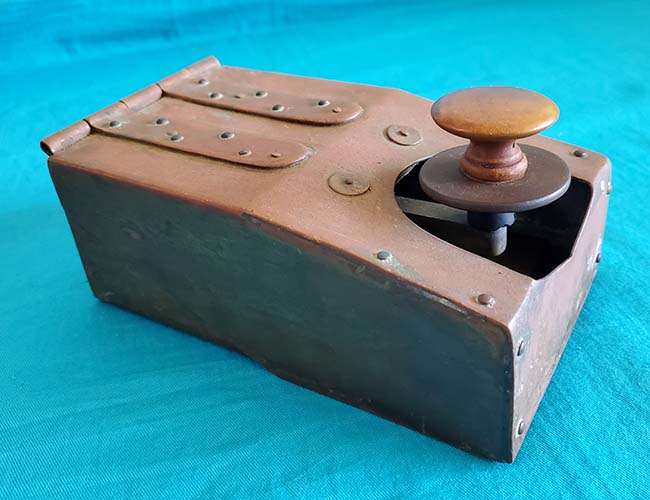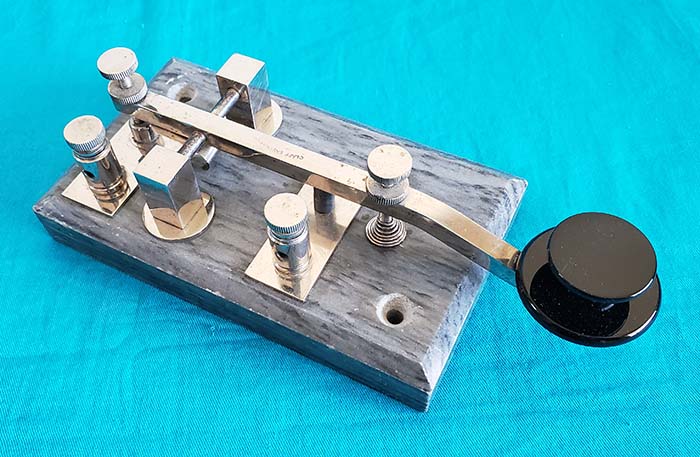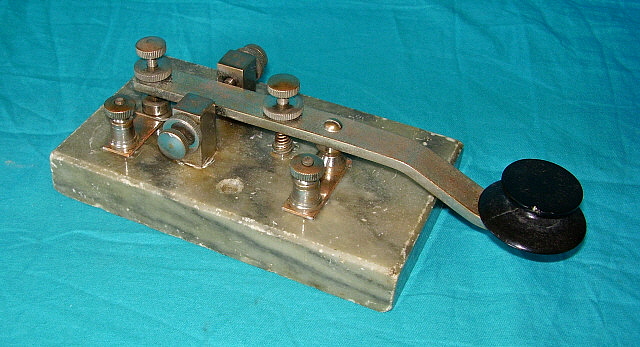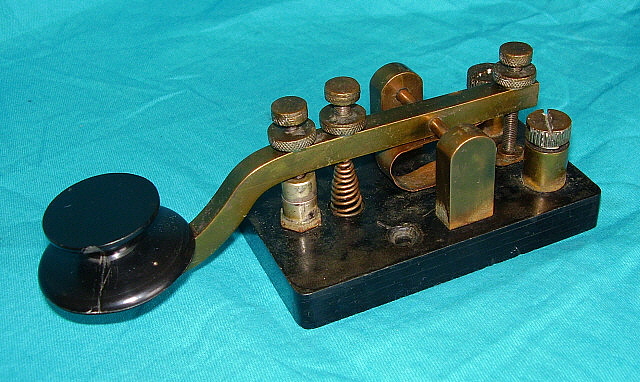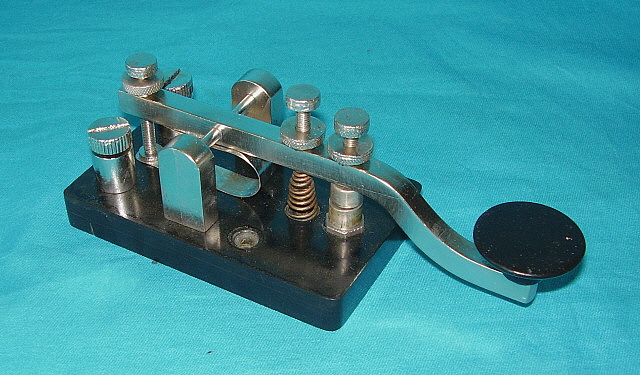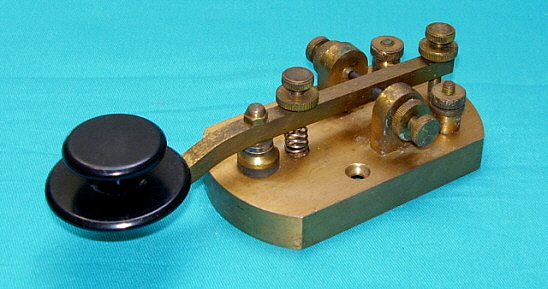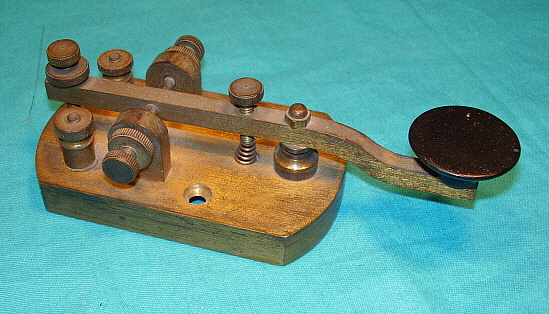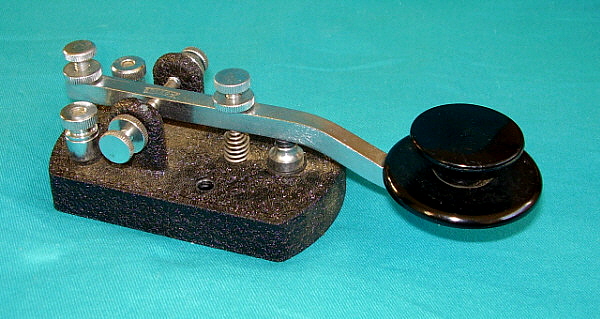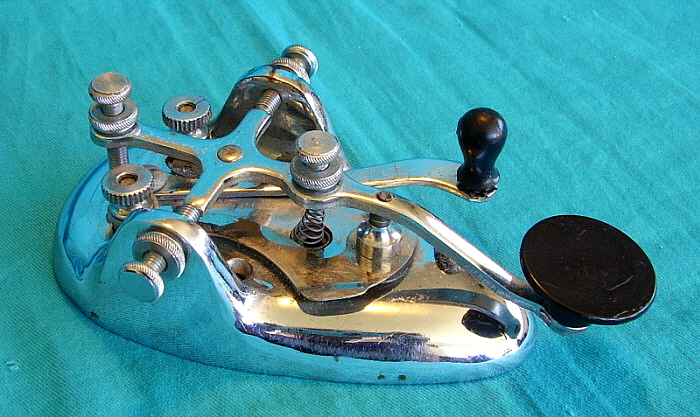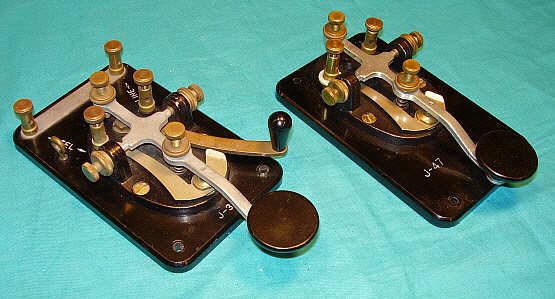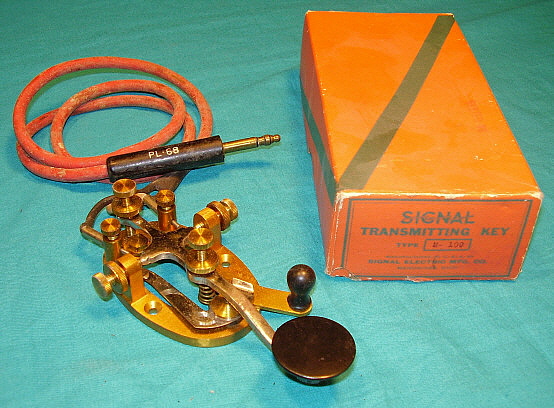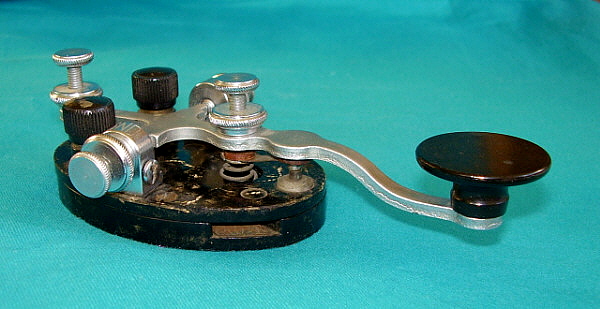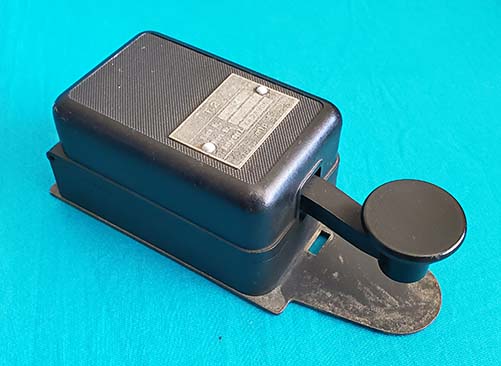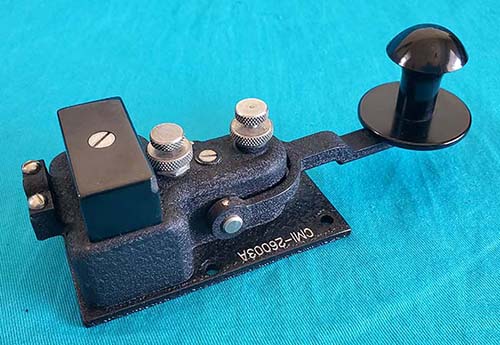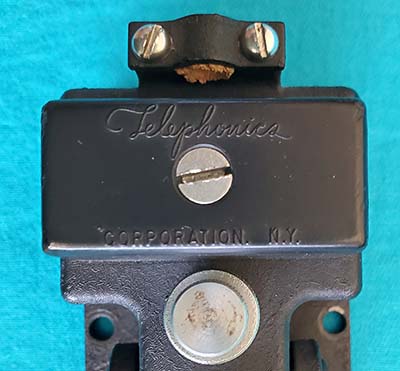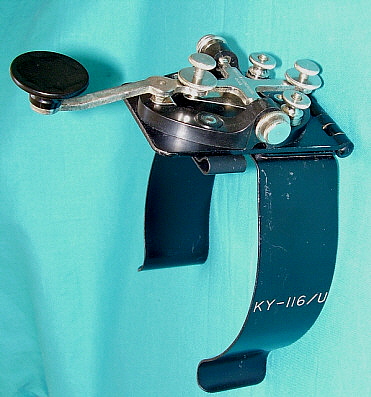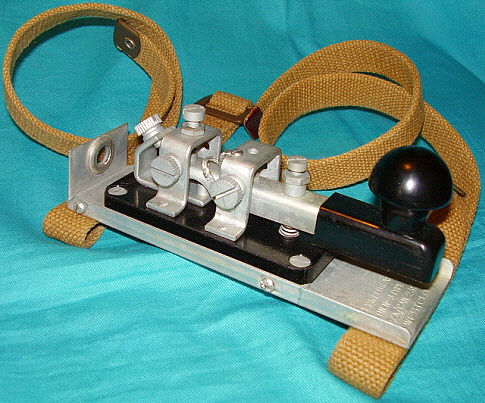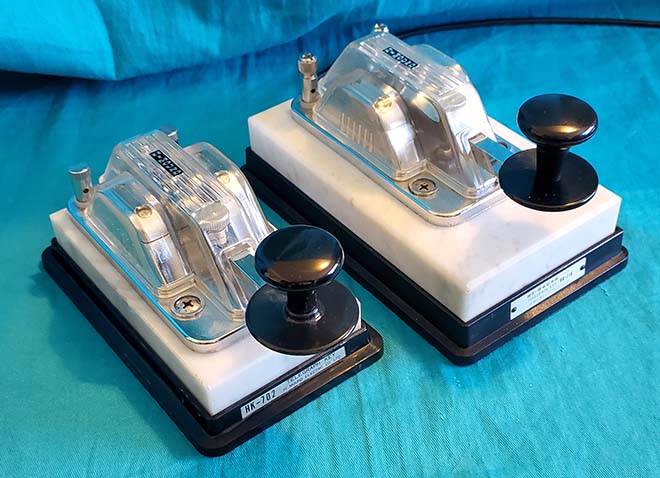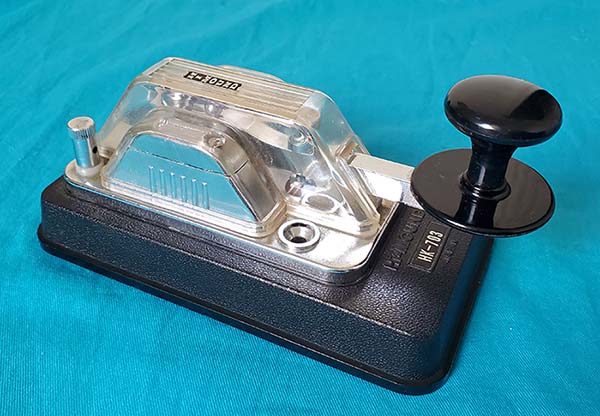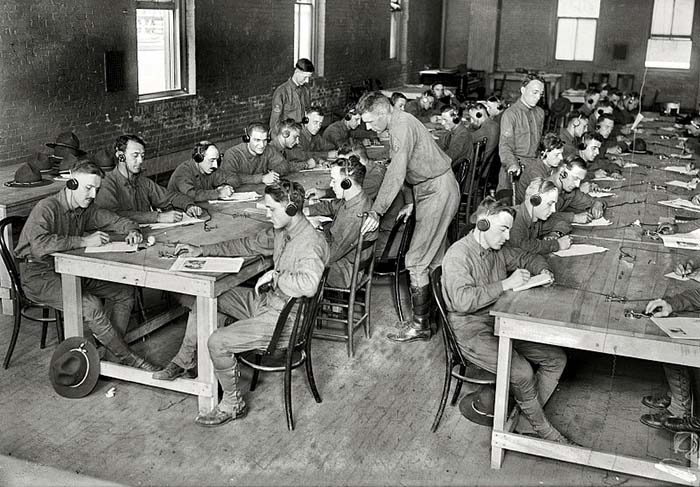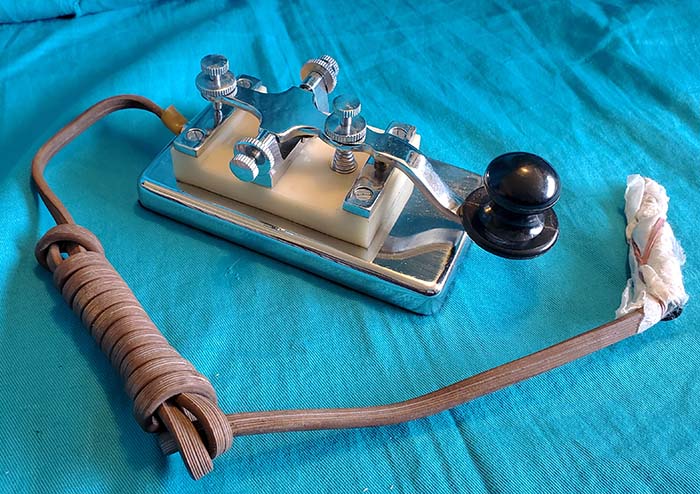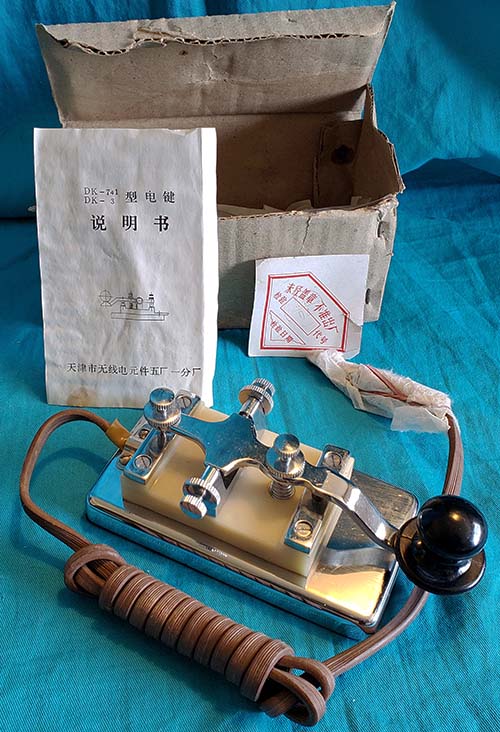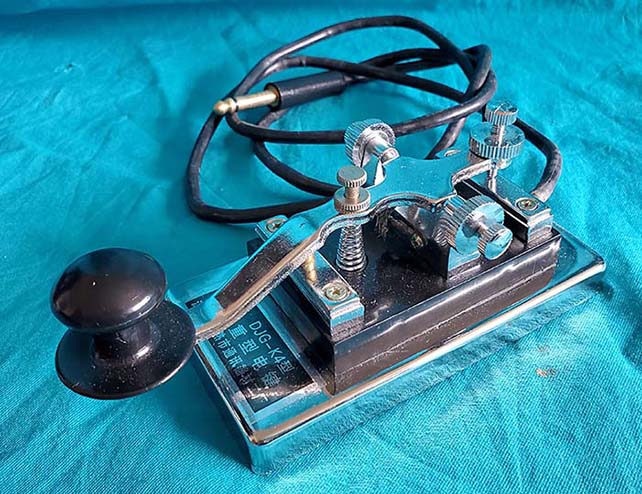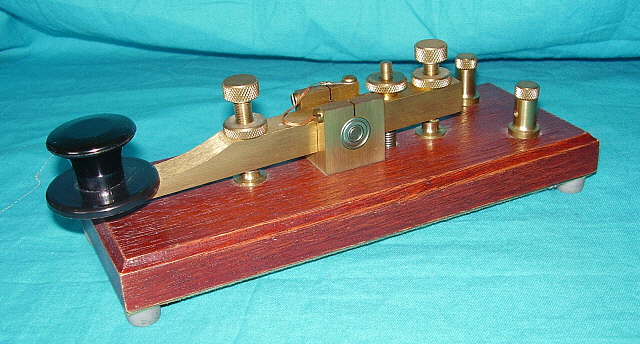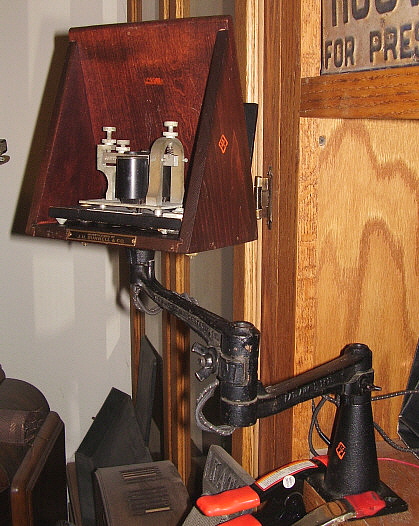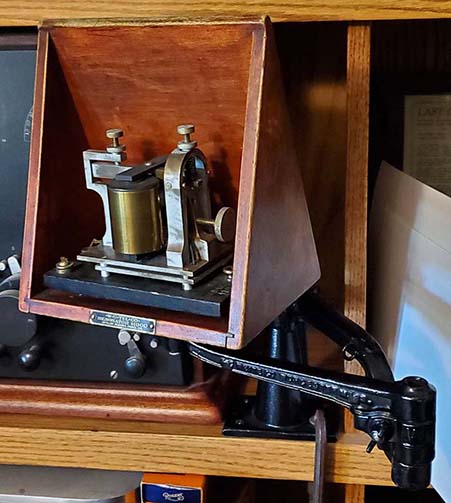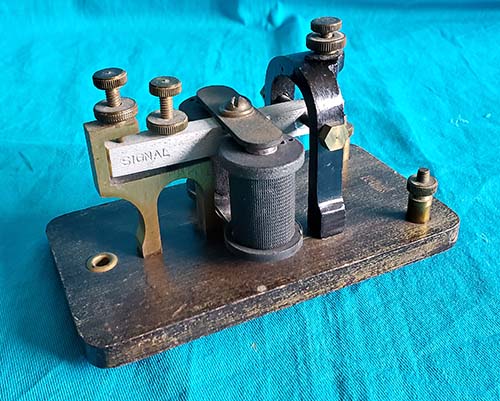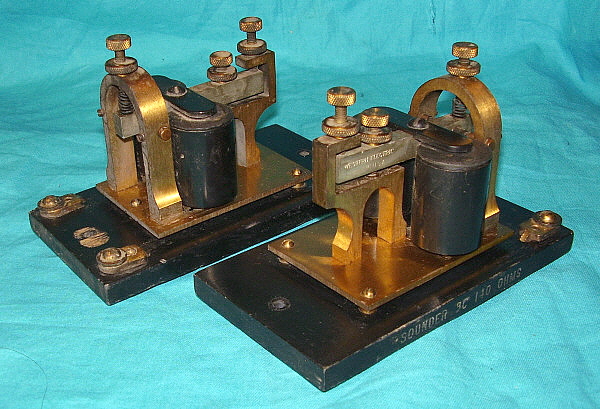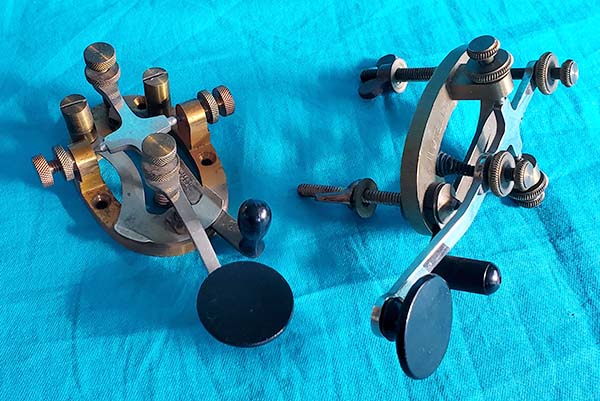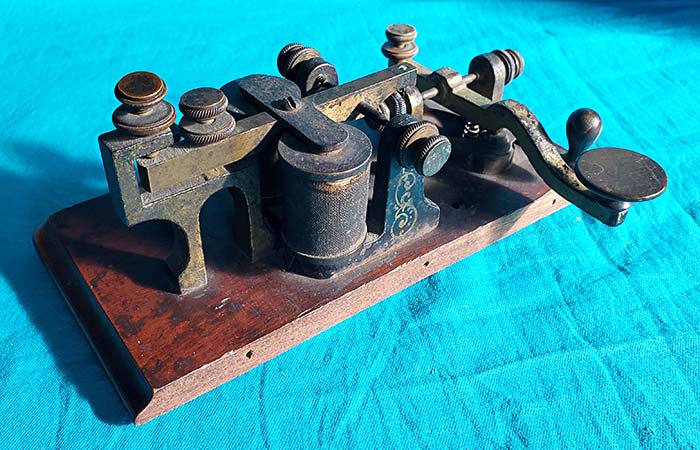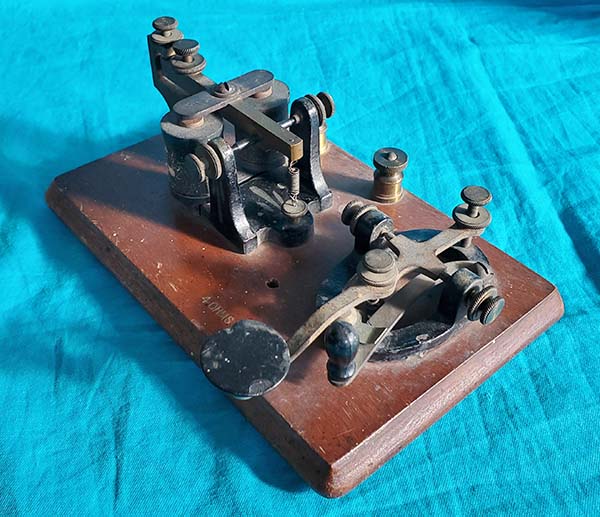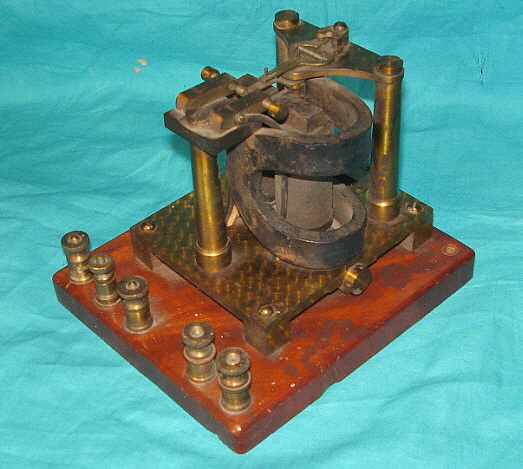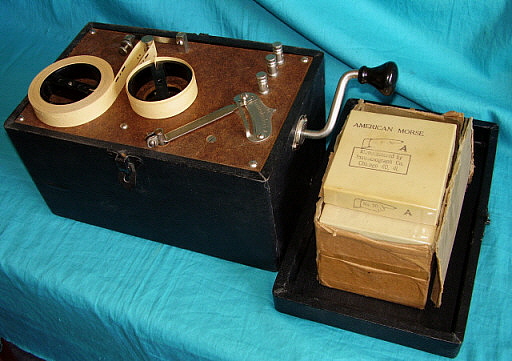|
Brief History of the Telegraphic
Codes
American Morse was the original telegraphic code developed in the 1840s. Initially,
it is a
code that was to be printed on a Morse Register. Since it was not
aurally received, the code is more difficult than expected and is made up of dots, dashes, longer dashers, even longer
dashers and different length spaces used between some of the dots or
dashes to create certain letters. Once operators learned they were
aurally receiving sent messages in "real time" by listening to the Morse
Register operate, the mechanical printing interface was replaced with a
simple "sounder." However, the Morse code remained the same, since that
was what the operators were "reading." No doubt, the original Morse was
a difficult code to learn and it was difficult to send and receive
without errors.
By the 1850s, sending Morse over
long runs of underwater telegraph cables was proving difficult due to
corruption of the dots due to a factor called dispersion. The distortion
or corruption worsened the faster one attempted to send a message.
Accurate message reception required that the code be sent much slower
than normal, sometimes as slow as only
one word per minute. In order to make the original Morse code better suited to being
sent over long runs of underwater cables required changing many of the
letter and number characters in an effort to
remove all of the variable spacing and different length dashes. This
ultimately "slowed" the code down and allowed more accurate reception. This
revised Morse
code was developed by Ferdinan Gerke and initially it was called
Continental Code. It was adapted by the German telegraphic cable companies in the 1860s.
Continental Code was continually tweaked and improved to allow better
and better sending and
receiving ability. At this time (1870s,) the original Morse code was referred to
as "American Morse" since it was mostly used just in the USA. Continental
Code was used in Europe and the rest of the world. By the 1880s,
Continental was being called International Morse and, by this time, it
was basically the same International Morse we use today.
As wireless communications
started, many of the US operators used American Morse. Some types of
wireless detectors only worked relays and sounders, like coherer
detectors. As wireless improved, it was obvious that International Morse
was more suited for damped wave spark transmitters and for reception on mineral
detector receivers. In 1912, the Wireless Conference in
London ruled that all ship wireless messages were to be sent by
International Morse. Most other wireless users also followed this rule.
Hams still tended to use whatever they were accustomed to. Many hams at
that time were also railroad telegraphers and American Morse was
sometimes found on the hams bands.
There was an attempt to make International Morse the standard for
landline users but resistance from companies like Western Union and other wire
companies, who knew that sending messages via American Morse was about
20% faster than International Morse (and also the wire companies didn't
want to have to retrain their operators,) prevented International from
being adapted for USA landlines. Eventually, as communications moved
away from landline wire messages, American Morse wasn't used after the
mid-twentieth century. International Morse has continued on being used in radio
communications both for the military and the amateur.
Here's an example of the difficulty of learning and using American Morse. The
letter T is a dash. The letter L is a long dash. The number 0 is an even
longer dash. The letter P is five dots.
The number 5 is three dashes. The number 6 is six dots. The
letter C is a dot followed by a short space and then two dots. The
letter O is one dot, a long space and one more dot. The spaces can be
three different lengths depending on the character or word or sentence.
To become proficient in American Morse took a lot of time and a lot of
practice. Receiving it is even more difficult. You can send
International Morse and receive it fairly easily on a sounder (as was
done almost everywhere except the USA by the 1880s.) Very late
in the US railroad's use of telegraphic communications, some railroads did
use International Morse but the majority stayed with "railroad code"
until the end. |


